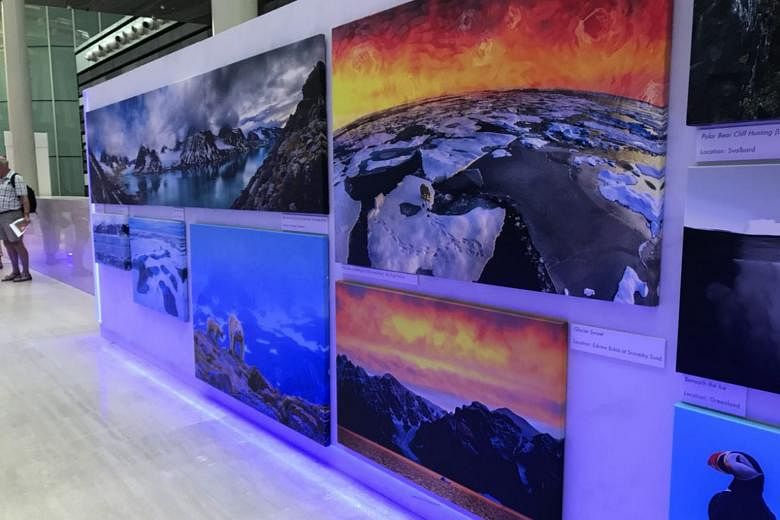SINGAPORE - The icy Arctic is almost a world apart from sunny Singapore, but the Republic has many "defensive and aggressive" interests in the region, said Ambassador-at-Large Tommy Koh on Thursday (Nov 9).
Speaking at a seminar on Arctic developments at the National Museum of Singapore, Professor Tommy Koh pointed to how melting ice caps could open up new trade routes that may affect the Republic's shipping hub status.
"We are one of the largest ports in the world and development in the northern route could impact the status and prosperity of our port," said Prof Koh in his opening address. Melting polar caps resulting in a sea level rise could also affect Singapore, he said, noting that the country is an island-state.
"So both our defensive and aggressive interests make us an interested stakeholder," said Prof Koh.
The Northern Sea Route is a new passageway for ships in the Arctic region. The opening up of the high Arctic all year round shaves 30 per cent off the travel time through the conventional Suez Canal-Malacca Strait route, and has implications for global shipping.
Already, a Russian gas tanker has for the first time, travelled the Northern Sea Route without an accompanying icebreaker earlier this year.
Said Prof Koh: "As the polar cap continues to melt, the world is very interested in whether we have an alternative route to the Suez Canal, linking North-east Asia and Europe. If the Arctic Ocean were navigable around the year, and not just in the summertime, this will shorten the sea route between North-east Asia and Rotterdam, for example."
Challenges aside, the Arctic could also provide commercial opportunities for Singapore companies, said Prof Koh.
"Two of our companies, including Keppel...have the technical capacity to build icebreakers and ice-class ships. (Singapore is) good at infrastructure development, so when there are opportunities to build maritime structures in the Arctic Ocean, this is an opportunity for Singapore."
During the event, Ambassador of Finland Paula Parviainen also pointed out how Singapore is linked to the Arctic. She said in her speech: "Even if the Arctic and the tropics are perceived as opposites, the disequilibrium in one of the two affects the other."
Singapore has been furthering its interest in the Arctic in a number of ways including exchanges between universities in climate change and sustainable development research. The Republic is also a permanent observer in the Arctic Council since 2013, and is represented by Minister of State in the Prime Minister's Office Sam Tan.
The Arctic seminar on Thursday was organised by the Embassy of Finland and the High Commission of Canada, with the support of Singapore's Ministry of Foreign Affairs. It is the first of a series of events, called Ice in the Tropics, organised by the embassies to raise awareness about the Arctic here.
Members of the public can also attend a free Arctic Photography Exhibit held at the concourse of the National Museum of Singapore from Nov 9 to Dec 3, for a look at photographs taken of the Arctic's icy waters, colourful skies, and diverse wildlife.
For more information on the Arctic events, visit www.iceinthetropics.com/



